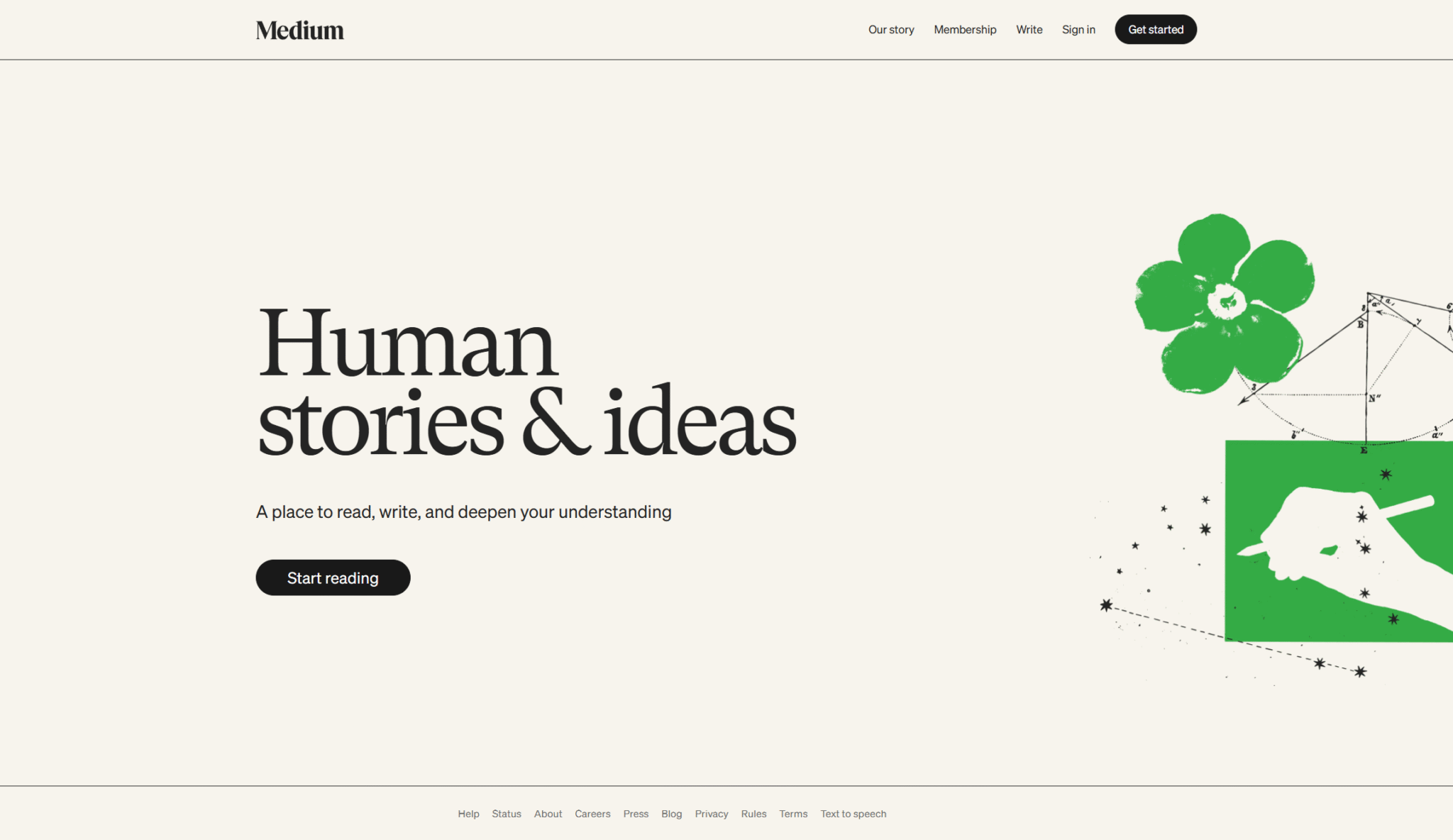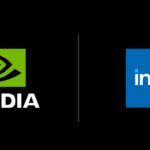Why you can trust TechRadar
We spend hours testing every product or service we review, so you can be sure you’re buying the best. Find out more about how we test.
Medium stands out as one of the most writer-friendly platforms in our comprehensive best blogging platforms roundup. Unlike traditional blogging tools, it functions more like a social network for long-form content, where your stories can reach millions without any marketing effort.
Our reviewers have tested 140+ of the best website builders and blogging tools giving us deep insight into what makes each platform unique. What sets Medium apart for us is its focus on content over customization. You won’t find the design flexibility of Wix, our top pick for 2025. But the tradeoff’s not for nothing.
Instead, Medium prioritizes discovery and engagement through its algorithm-driven feed system. The platform currently serves over 100 million monthly visitors and pays writers more than $2 million monthly through its Partner Program.
What is Medium?
Medium is essentially a hybrid between a blogging platform and a social media network, designed specifically for long-form written content. Founded by Twitter co-founder Evan Williams in 2012, it removes the technical barriers of traditional blogging by handling all the hosting, design, and infrastructure for you. You simply create an account and start writing. No coding, no theme selection, no server management required.
Think of Medium as a digital magazine where anyone can contribute articles, called “stories” in Medium’s terminology. Your content appears not just on your personal profile but also gets distributed through Medium’s recommendation system to readers who might be interested in your topics. This built-in audience discovery is Medium’s biggest advantage. Your first article could potentially reach thousands of readers without any promotional effort on your part.
Features
Medium’s feature set reflects its philosophy of simplicity over complexity, offering just enough tools to create engaging content without overwhelming writers with options.
The platform excels at content creation and discovery features but falls short on customization and branding capabilities that business users typically need. At $5 monthly for the basic membership, Medium offers reasonable value for writers focused purely on content creation, though it can’t compete with full-featured platforms for businesses requiring extensive customization.
The platform’s strength lies in its community-driven features like publications, follower systems, and engagement tools that help writers build audiences organically. However, you’ll miss advanced features like custom domains, detailed analytics, or ecommerce integration that competitors offer. Medium’s pricing becomes more justifiable when you consider the built-in audience and monetization potential through the Partner Program, though serious bloggers may eventually outgrow these limitations.
Content editor
Medium’s editor stands out for its clean, distraction-free interface that focuses entirely on writing. The editor uses a simple plus-sign system to add multimedia elements like images, videos, and code blocks, while text formatting appears when you highlight content. This approach eliminates the complexity found in traditional CMS platforms, letting you focus purely on crafting your message.
Publications system
Publications function like digital magazines where multiple writers can contribute content around specific themes or topics. You can either create your own publication or submit stories to existing ones with established audiences. This system provides an excellent way to reach targeted readers beyond your personal followers, with some publications boasting thousands of dedicated subscribers.
Partner program monetization
The Partner Program allows writers to earn money based on reading time from paying subscribers, with earnings calculated through factors like engagement, follower bonuses, and story boosts. Writers can earn anywhere from a few dollars to thousands monthly, with top performers making substantial incomes. The program requires a $5 monthly membership and at least one published story to qualify.
Social features
Medium incorporates social networking elements like following other writers, clapping for stories (similar to likes), and highlighting specific text passages for comments. These features create a more interactive experience than traditional blogs, encouraging community building and reader engagement. The platform also offers audio narration for stories, expanding accessibility for different types of content consumption.
Ease of use
Medium prioritizes simplicity above all else, making it one of the most beginner-friendly publishing platforms available. The onboarding process takes just minutes. You create an account, choose topics to follow, and can immediately start writing or reading. The interface feels more like using a word processor than managing a complex website, with all technical aspects handled automatically in the background.
The writing experience centers around Medium’s elegant editor, which reveals formatting options only when needed. New paragraphs show a plus sign for adding multimedia, while highlighting text reveals options for bold, italic, headers, and links. This progressive disclosure approach prevents interface clutter while keeping powerful features accessible when you need them.
Medium’s approach to publishing reflects founder Evan Williams’ vision of removing friction from content creation. Unlike traditional blogging platforms that require decisions about themes, plugins, and hosting, Medium handles everything automatically. You write, hit publish, and Medium’s algorithm immediately begins showing your content to potentially interested readers based on their reading history and followed topics.
The platform does have some accessibility considerations worth noting. While the clean design works well for most users, the limited customization options mean you can’t adjust fonts, colors, or layouts for specific accessibility needs. However, Medium’s built-in audio narration feature helps serve users who prefer listening to reading.
Pricing
|
Plan |
Starting rate (paid annually) |
Renewal rate (paid annually) |
|
Free |
$0/month |
$0/month |
|
Medium Member |
$5/month |
$5/month |
|
Friend of Medium |
$12.50/month |
$12.50/month |
Medium’s pricing structure is refreshingly straightforward compared to most blogging platforms. The free tier allows unlimited publishing and reading of non-member stories, but limits you to three member-only articles monthly. A freemium approach lets you test the platform thoroughly before committing to a paid plan.
The $5 monthly membership unlocks unlimited reading of all stories, enables Partner Program participation for earning money, and includes audio narrations. The $15 monthly “Friend of Medium” tier provides the same features but pays writers 4x more when you read their content, making it more of a supporter tier than a feature upgrade.
Unlike traditional blogging platforms, Medium has no transaction fees, hosting costs, or additional charge. The membership fee covers everything.
Customer support
Medium’s customer support operates primarily through email and social media channels, with no live chat or phone support available for immediate assistance. You can reach their support team by filling out a form at help.medium.com or contacting them directly at [email protected]. For specific issues like complaints or feedback, they provide dedicated email addresses including [email protected] for platform concerns and [email protected] for legal matters.
The quality of customer support receives mixed reviews from users. According to customer satisfaction data on TrustPilot, Medium scores just 1.7 out of 5 stars for customer service, with most users reporting dissatisfaction with response times and issue resolution. Only 5% of customers who contacted support reported having their issues resolved on PissedConsumer, which is concerning for a platform serving millions of users. The average call time when reaching their phone line is just 1 minute, suggesting limited depth in support interactions.
Medium’s support structure reflects their focus on self-service solutions rather than hands-on customer care. They maintain a comprehensive knowledge base for common questions and troubleshooting. However, this approach can frustrate users dealing with account issues, billing problems, or content disputes that require human intervention. The lack of real-time support options like live chat makes Medium less suitable for businesses requiring immediate technical assistance.
For serious publishers or businesses considering Medium, the limited support infrastructure represents a significant drawback. You’ll need to rely heavily on community forums and self-help resources when problems arise. This hands-off approach works fine for casual writers but becomes problematic when dealing with monetization issues, publication management, or account security concerns that demand prompt resolution.
Alternatives
Medium occupies a unique position in the blogging landscape as a social publishing platform rather than a traditional content management system. With over 99,522 companies using Medium globally as of 2025, it holds a modest market share compared to competitors like Tumblr (72.09%) and Google Blogger (5.33%). Medium’s strength lies in its built-in audience of 100 million monthly readers and its focus on content discovery over customization.
The platform works best for individual writers, thought leaders, and content creators who prioritize reaching audiences over building branded websites. It’s particularly valuable for freelance writers building portfolios, startup founders establishing thought leadership, and journalists sharing insights without technical overhead. Medium’s Partner Program makes it attractive for writers seeking immediate monetization opportunities based on reader engagement rather than traditional advertising models.
Medium’s main competitors serve different needs across the blogging spectrum. WordPress.org dominates for users wanting complete control and customization, while platforms like Ghost cater to professional publishers seeking speed and membership features. Substack competes directly in the newsletter space, and newer platforms like Bullet.so target Notion users wanting SEO control with custom domains. Newer solutions like Wix offer more design flexibility for brand-focused creators.
For businesses requiring custom branding, SEO control, or advanced features, Medium’s limitations become apparent quickly. The platform’s algorithm-dependent distribution and lack of custom domains make it unsuitable for companies building long-term digital assets. However, for writers prioritizing content creation over technical management, Medium remains one of the most accessible publishing platforms available, especially when combined with its built-in monetization and discovery features.
Medium: Summary
Medium succeeds as a streamlined publishing platform that removes technical barriers between writers and their audiences. Its clean editor, built-in readership, and Partner Program monetization create an appealing package for content creators focused purely on writing. The platform’s social networking features and algorithmic distribution help new writers gain exposure that would take months or years to achieve on independent blogs.
However, Medium’s limitations become significant for users requiring control, customization, or long-term brand building. The lack of custom domains, limited design options, and algorithm dependency make it unsuitable for businesses or serious bloggers planning sustainable content strategies. While Medium works excellently for individual writers and thought leaders, its constraints ultimately position it as a stepping stone rather than a permanent solution for most professional content creators.
Medium review: FAQs
Can I use my own domain with Medium?
Medium offers custom domain support only for publications, not individual writer profiles. This means you can connect a custom domain if you create a Medium publication, but your personal Medium profile will always use the medium.com/@username format. This limitation significantly impacts branding efforts for businesses and professional writers who want to build their own digital presence rather than relying on Medium’s platform.
How much money can I make through Medium’s Partner Program?
Earnings through Medium’s Partner Program vary dramatically based on your content quality, audience engagement, and publishing frequency. Top writers can earn thousands of dollars monthly, while most participants make anywhere from a few dollars to a few hundred dollars. Your earnings depend on reading time from paying subscribers, with factors like follower bonuses and story boosts affecting your total compensation. You need a $5 monthly membership and at least one published story to qualify for the program.
Can I export my content from Medium if I decide to leave?
Medium allows you to export your stories, but the process has limitations. You can download your data through your account settings, which includes your published stories in HTML format. However, you’ll lose the engagement metrics, comments, and social proof built up on the platform. The exported content also requires reformatting for use on other platforms, and you won’t retain the SEO benefits or backlinks generated through Medium’s domain authority.
Is Medium good for SEO?
Medium provides mixed SEO benefits due to its high domain authority but limited control over optimization. While your content benefits from Medium’s strong search engine presence, you can’t customize meta descriptions, URLs, or implement advanced SEO strategies. Medium automatically handles basic SEO elements like canonical tags and meta titles, but you’re restricted to their format and structure. For serious SEO efforts, dedicated blogging platforms offer much better control and long-term visibility potential.
What’s the difference between Medium’s free and paid memberships?
Medium’s free tier allows unlimited publishing and reading of non-member stories, but limits you to three member-only articles monthly. The $5 monthly membership unlocks unlimited reading of all stories, enables Partner Program participation for earning money, and includes audio narrations of articles. The $15 monthly “Friend of Medium” tier provides the same features but pays writers 4x more when you read their content, functioning more as a supporter tier than offering additional features for your own content creation.
Read the full article here















